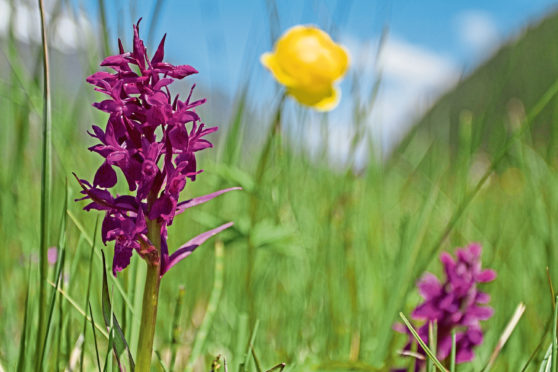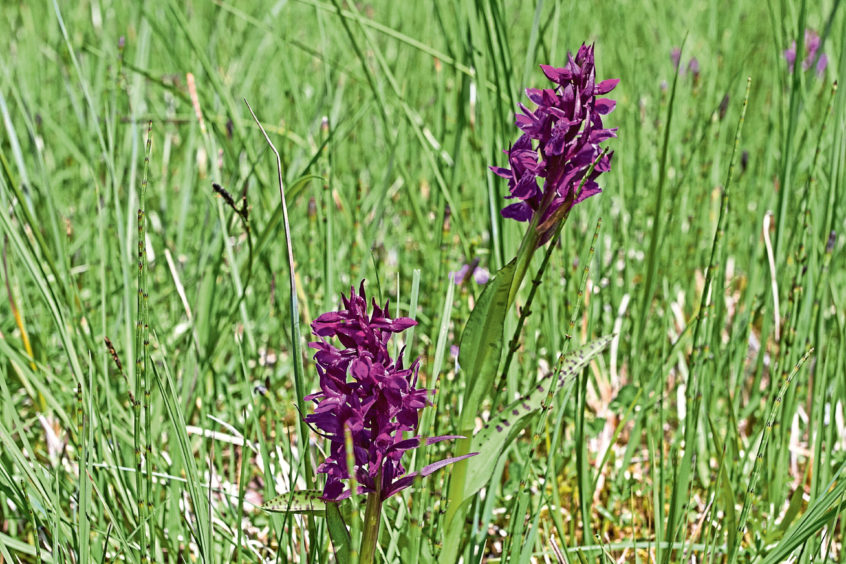Orchids have enthralled humankind from the earliest of times and have long been associated with love and fertility. Scotland is home to around 30 species of orchid.
It was like a low blow to the stomach, one that takes your breath away and leaves the body numb. I had come to look for northern marsh orchids by the edge of a forest track on the far side of the strath, a place where they bloom and prosper each summer in their purple-spiked splendour.
My anticipation was intense, for the flower-head of the northern marsh orchid has an intensity of colour that is almost unmatched by any other wildflower in Scotland, and there is no word in our language that adequately describes the powerful depths that lies behind such spellbinding purpleness.
But as I turn one of the corners of the trail, I stop in astonishment, because ahead of me the track has been dramatically widened, presumably in preparation for forestry operations. The orchid filled verges from before had gone and now there was not a flower in sight; no flashes of burgundy, but instead mounds of rock and soil.
It is one of those conflicts between human activity and nature, and in this case the hand of man had prevailed; not, I am sure, through any lack of consideration for the orchids by the foresters, but more down to them being unaware that the plants were even there. Had they known so, then perhaps they would have completed their track renovations in a more sympathetic manner.
For me, the loss of these orchids was a tragedy, with the incident highlighting the importance of being knowledgeable about our local areas and the plants and animals that live in such places.
Common spotted-orchids also previously thrived by this damp track edge; more subtle in their beauty than the marsh orchid and sporting delicate pale lilac patterned flowers. If there is tall grass around, then the stems of these orchids grow tall to enable the flowers to protrude over the top.
But I suppose the disappointment of their loss has been assuaged to some degree by the abundance of other colour in the strath, and down by the river, the shingle banks are ablaze with the azure blues of water forget-me-nots and the bright yellows of monkey-flowers (a non-native species from North America). By the edge of a shallow tributary burn, a clump of water mint flourishes. It has yet to flower, but once it does so, the tops of the mint will be dusted with violet.
The season is passing so fast. The mallard ducklings that only a short-time ago were little bundles of fluff are now almost as large as the mother and fully feathered. Six of the youngsters have reached this stage, an excellent survival rate, given the ever present threat of predation by otters and mink.
I watch a sandpiper disappear on flickering wings around a bend of the river. It won’t be here for much longer, its chicks are almost fully grown, and soon it will be heading back south again to its wintering grounds in Africa.

